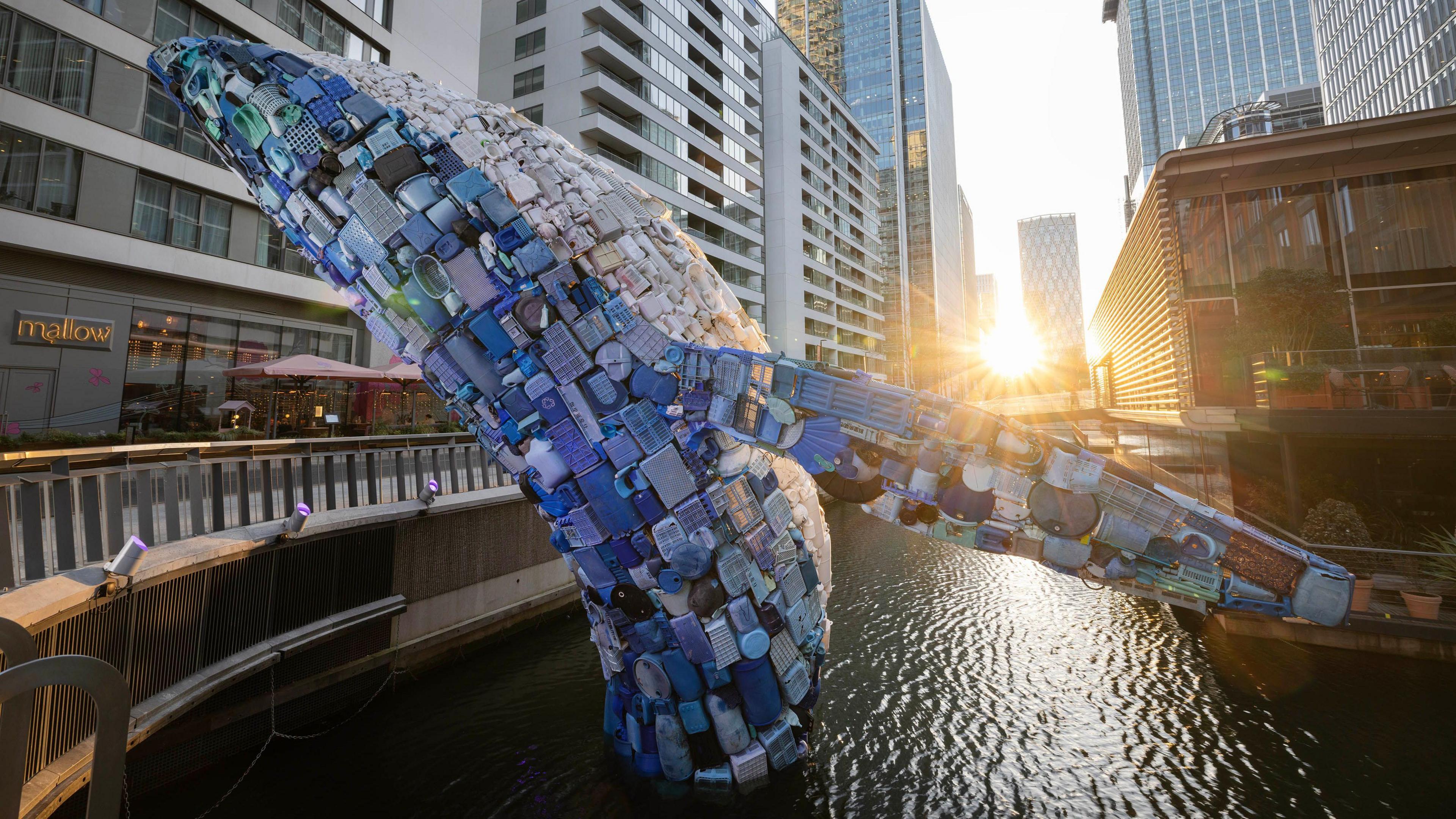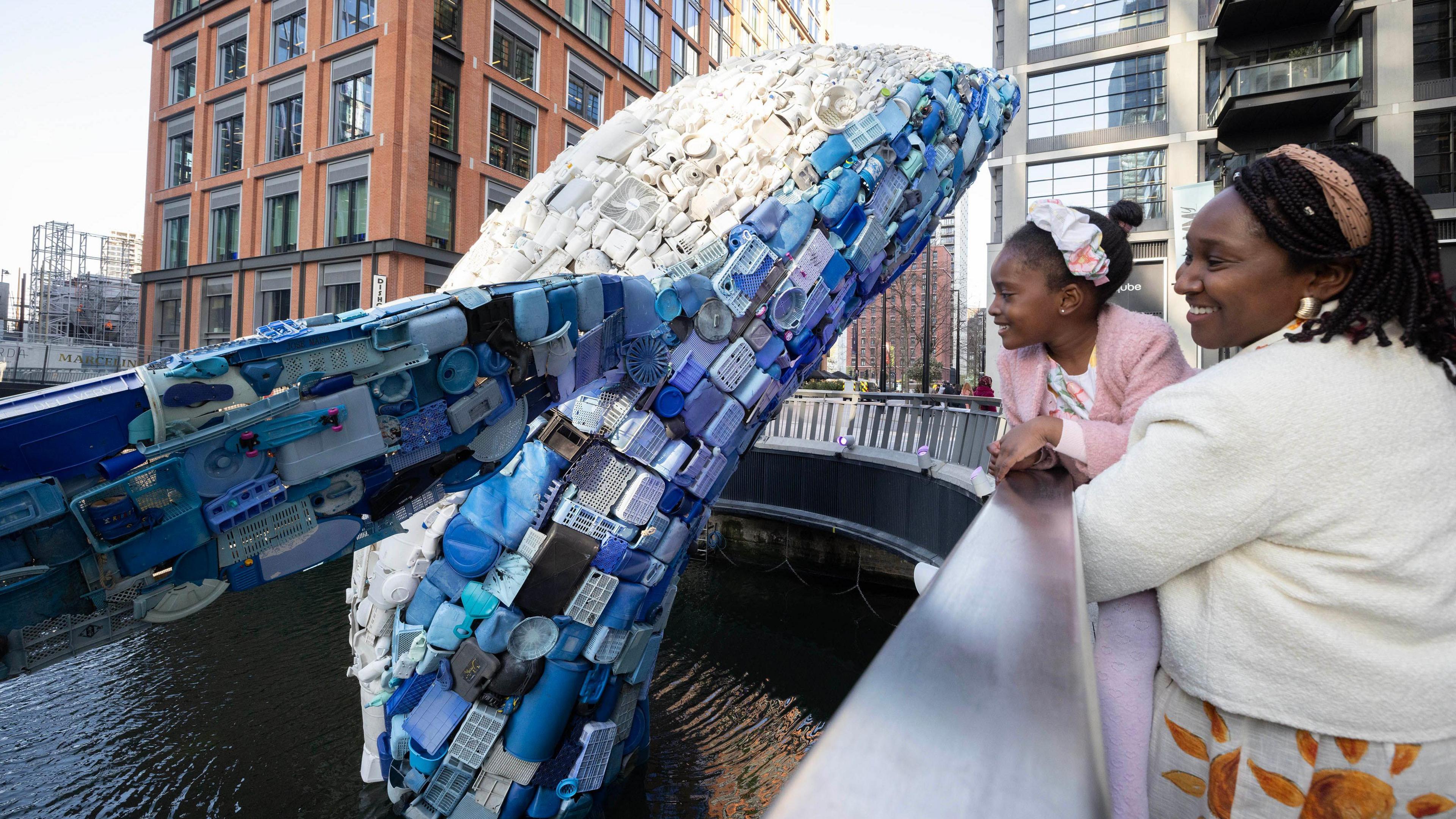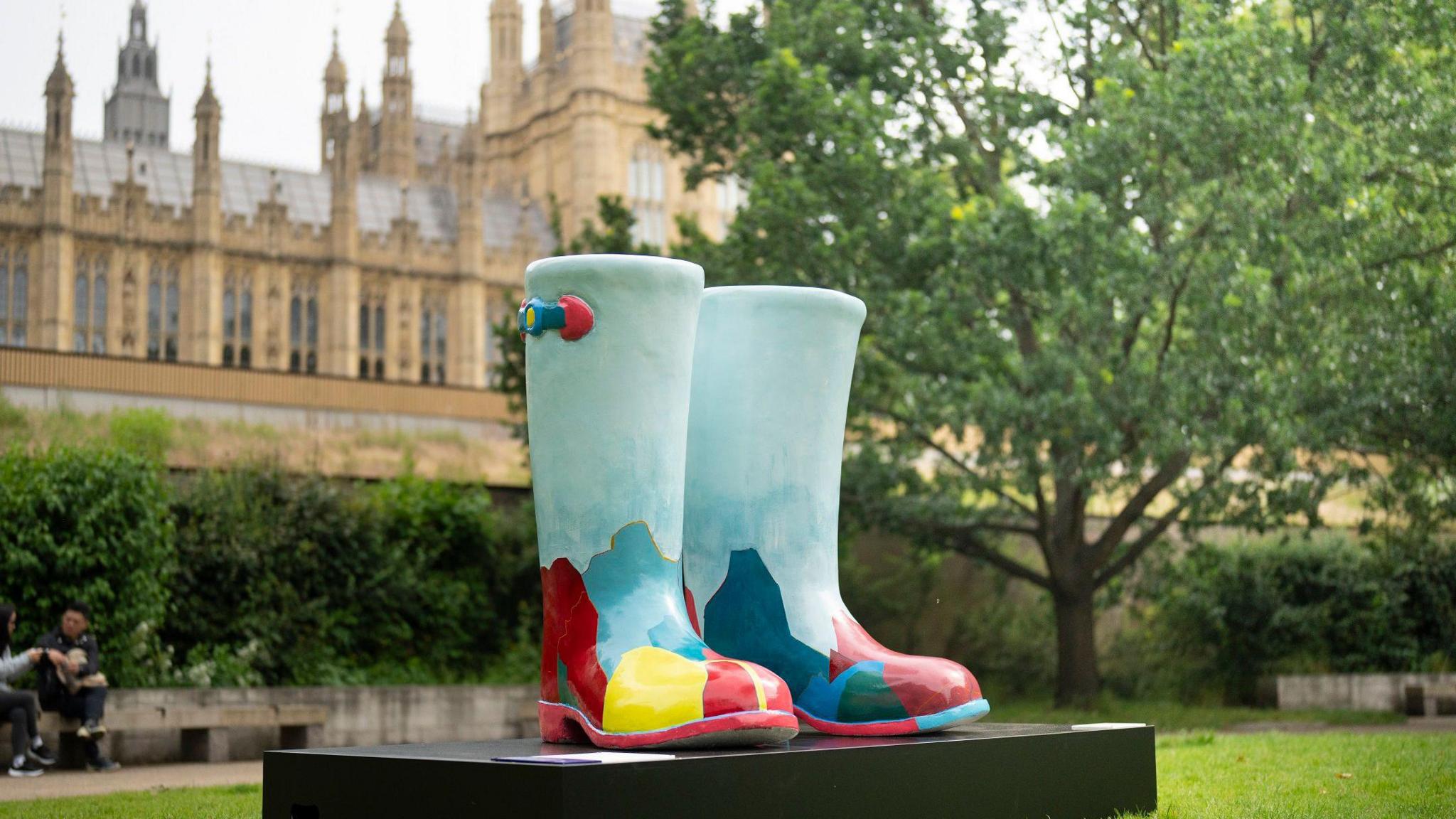Canary Wharf's 'whale' a reminder of plastic waste

An 11m (36ft) blue whale sculpture has been installed at Canary Wharf
- Published
A large blue whale sculpture has been unveiled at London's Canary Wharf as a reminder of the millions of tonnes of plastic waste swimming in the Atlantic and Pacific oceans.
New York-based architecture and design firm StudioKCA worked with the Hawaii Wildlife Fund to build the 11m (36ft) tall sculpture from plastic litter on the beaches of Hawaii.
Its concrete base is made of spent coffee grounds from Canary Wharf's cafes and restaurants.
"There is more plastic swimming in our oceans than there are whales," said artists Jason Klimoski and Lesley Chang.
"Whale on the Wharf is a physical example of why we need to change how we use and dispose of plastic in the world today, and we're thrilled to be showcasing this piece for the first time in the UK in Canary Wharf's waters."
Whale on the Wharf (Skyscraper) is the latest artwork to join the Canary Wharf public art collection.

The sculpture is a reminder of the millions of tonnes of plastic waste swimming in the Atlantic and Pacific oceans
The sculpture is made from sustainable elements, not just recycled plastic, and according to the Canary Wharf Group (CWG) has a first-of-its-kind, low-carbon concrete underwater base.
Since 2009, developers CWG said it has sent zero waste to landfill from its managed areas and has put the sculpture in place to show its commitment to reducing waste and promoting a circular economy.
Lowri Harries at CWG said: "Our commitment to sustainability extends beyond the recycled plastic used in the sculpture – the installation process has also been carefully considered to reduce its carbon footprint.
"Whether visitors come to the Wharf specifically to see this iconic sculpture up close, or it catches their eye when passing through, we hope it provides everyone with some pause for thought."
Listen to the best of BBC Radio London on Sounds and follow BBC London on Facebook, external, X, external and Instagram, external. Send your story ideas to hello.bbclondon@bbc.co.uk, external
Related topics
Similar stories
- Published26 March 2024

- Published22 June 2024

- Published13 July 2023
